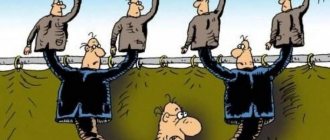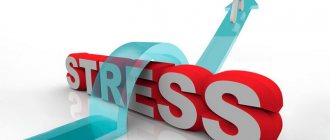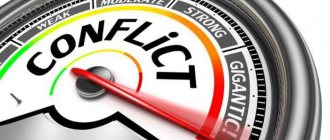Flow, which is characterized by focus on what you're doing, enjoyment of doing your work, and a distorted perception of time, helps to significantly increase productivity.
The state when we are completely immersed in our activity is described by psychologist Mihaly Csikszentmihalyi, who first proposed the concept of flow, as an action in itself. Such actions completely depend on the mentality and preferences of a particular person. Some people, for example, experience a state of flow while working, doing yoga, or cooking dinner.
We perform self-directed actions for their own sake, since the sensations associated with them are the goal.
Mihai Ciksen
In a state of flow, the brain works faster, it is easier for us to process and comprehend information. And if you increase the time spent in it by at least 15–20%, productivity will double. Increasing the 'meaning quotient' of work / McKinsey Quarterly.
Steven Kotler writes about this in his book The Rise of Superman. He attributes this increased performance to a mixture of five neurochemicals that the brain produces in a state of flow: norepinephrine, dopamine, endorphins, anandamide and serotonin. Thanks to them, flow is one of the most pleasant and addictive states.
But it doesn't stop with productivity. Kotler believes that a state of flow has many health benefits, especially for the immune system.
You can immerse yourself in a state of flow by changing your attitude towards work. Six simple steps will help you do this.
Get rid of persistent myths about work
The state of flow is very different from our typical idea of work. Being in the flow, we experience a feeling of lightness, pleasure and depth in our work; we are relaxed and focused at the same time. Outside of it, we are nervous, cannot concentrate, we have the feeling that we are not in control of the situation and are not getting anything done.
Csikszentmihalyi believes that we enter a state of flow when the task we are working on matches our skills, but at the same time remains challenging enough to remain interesting. However, even when these conditions coincide, we do not always enjoy our work. It's simple: many people think that work should be unpleasant.
Some equate stress and discomfort with productivity, believing that hard work produces quality results.
It's exactly the opposite. In such a situation, time usually flies between periods of haste and procrastination - and by the evening we collapse without having really done anything.
So before you try to get into a state of flow, let go of any past preconceptions about work.
How to achieve “flow”
Csikszentmihalyi does not offer simple recipes, and yet what he says does not seem unattainable. Just:
- find the type of activity that really interests you;
- exercise the ability to concentrate;
- set small goals that develop your skills;
- practice, devote yourself to what you love hour after hour and day after day.
It is precisely this kind of activity—with set goals, clear rules, and pleasure in the process—that allows a person to overcome his inherent “psychic entropy.” Our vanity, despondency, anxiety, envy, negative thoughts cause our attention to wander - but we can, with a conscious effort, direct our mind to where our “flow” rushes - whatever it is: caring for plants or writing symphonies, playing with a child or management of the corporation.
“The possibility of development, which allows us to simultaneously enjoy life, is to create an order of a higher level from entropy, which is an inevitable condition of existence. This means that every new challenge that life throws at us should not be perceived as something that must be avoided at all costs, but as an opportunity for learning and self-improvement.”
Mihaly Csikszentmihalyi
author of the book "Flow"
Have a clear goal
A prerequisite for a state of flow is a clear, clear goal. For example, a 2003 study found that hospital cleaners feel like they are part of a team that helps A. Wrzesniewski, P. Rozin, G. Bennett. Working, playing, and eating: Making the most of most moments / Flourishing: Positive psychology and the life well-lived for people to recover.
This view brings awareness of our purpose and causes a different attitude towards work, completely different from when we think only about salary or career.
Therefore, it is very important to define your own purpose, which will combine your current position with your personal mission. If you're struggling, think back to the part of your job that brings you the most satisfaction and think about why you enjoy it so much.
About Mihai Cixen
“Flow: The Psychology of Optimal Experience” by Mihaly Csikszentmihalyi will be the answer to skeptics and pessimists who are confident that our life and everything that happens in it is devoid of any meaning.
Mihai writes about people who are able to experience an amazing state of consciousness, soul and body - the “State of Flow”. And this wonderful flow is not the fruit of a fevered imagination, the first bell of mental illness or episodic enlightenment - it is the result of the correct application of psychic energy to the process of achieving a predetermined goal. We invite our readers to get acquainted with interesting excerpts and main ideas from the book “Flow” by Mihaly Csikszentmihalyi, a famous American psychologist and founder of positive psychology, author of more than 20 books and numerous publications about creative search, the meaning of life and the realization of creative potential. The book we are going to talk about is dedicated to the idea of flow - the optimal state of our consciousness, ways to achieve it and the possibilities that it reveals.
Develop flow thinking
People who are predisposed to self-directed actions are usually open to new experiences. They have developed internal motivation. They do not work for anyone, but for the pleasure of completing an interesting task. And since they are not attached to results, it is easier for them to immerse themselves in a state of flow.
All these qualities can be developed in yourself. First, focus on a specific task. If you find yourself distracted by other thoughts or fearful of the consequences of failure, return to your task and focus on completing it.
Use positive self-hypnosis. In a study of runners' habits, it was found to help athletes enhance their flow state S. Koehn, J. Díaz-Ocejo. Imagery intervention to increase flow state: A single-case study with middle-distance runners in the state of Qatar / International Journal of Sport and Exercise Psychology. . Before you take on a new business, imagine that everything is going smoothly. Just a few seconds of such self-hypnosis will make it easier to immerse yourself in the flow.
Deep work
In 2021, Georgetown University computer science professor Cal Newport published Deep Work: Rules for Focused Success in a Distracted World. In the book, Newport formulated a concept of approaching daily work responsibilities that involves maximum self-awareness in the process and complete immersion in it.
The phrase deep work in Newport's philosophy means an activity that is performed in a state of complete concentration, without distractions.
The moment a person focuses on the task at hand, his cognitive abilities are at their limit. Along with deep work, there are tasks that do not require comprehension and immersion in them. This is a routine that people do automatically, such as checking email daily or routinely responding to official requests.
Now, when people are constantly distracted by information noise and lose the ability to concentrate well on tasks, the skill of deep work is becoming increasingly relevant. Newport believes that the ability to engage in deep work will be especially valued in the knowledge economy that is being built today. The teacher deduces a new law of human efficiency: “The quality of the work produced = time spent * intensity of immersion in work.” This is not a secret formula: the phrase that you need to work not more, but better, is gradually becoming a truism.
Newport suggests following five steps to achieve a state of deep focus:
1. Get acquainted with the philosophy of deep work. There are four “philosophical” principles of deep work that need to be mastered and implemented gradually:
- Monastic. Deep work time increases due to maximum isolation from external stimuli.
- Bimodal. All waking time needs to be divided into clearly defined segments for deep work and everything else. At least one day a week must be “monastic”.
- Rhythmic. Newport believes that rituals tell the brain that work on task A is over and it's time to focus on task B. They also reduce anxiety about difficult tasks and thereby increase productivity. Therefore, he suggests creating a deep work ritual, making it habitual, and devoting 3-4 hours to concentrated work every day.
- Journalistic. Each day can be varied with a series of intervals to perform superficial tasks and deep work. Newport cautions that this principle is only useful to advanced users.
2. Make work a habit. Since, ideally, deep work should become a habit, it should first be planned on the calendar, in no case postponing or moving the allocated time periods. But planning alone is not enough: you need to select one specific place where deep work will take place, and a specific period of time that will be devoted to it from time to time, and also add small rewards that will help replenish energy.
3. Apply business rules to organize your own work. Newport refers to the book The 4 Disciplines of Execution (4DX), which describes the principles of effective management of business strategies. From it he takes four postulates:
- focus on the most important things and not dilute the main tasks with small tasks;
- act in accordance with the lead indicators, that is, gradually increasing the time of deep work;
- organize a convenient and well-designed schedule with clear task tracking tools;
- record achievements and failures. Individuals, like businesses, need accountability for future progress.
4. Isolate yourself from irritants. While working, you should abstract yourself from using the Internet, viewing notifications and mail. To avoid disruption, you can set aside time in your schedule for these tasks.
5. Be sure to give yourself rest. You might think that a person is capable of working all day if the work brings him real pleasure. But this is not true: after 4 hours of hard work, any person will lose concentration and begin to perform worse. Therefore, it is important to give yourself time to recharge and refresh and, if possible, not to work in the evenings. At the end of the day, it’s better to slow down, disconnect from work tasks and put away all gadgets.
Reduce distractions
The constant distractions in modern offices are the biggest obstacle to getting into a state of flow. As soon as we start one thing, we are distracted by something else: calls, emails, meetings, requests from colleagues. Because of this, productivity drops noticeably.
So try to reduce distractions as much as possible. Keep only the browser tabs open that you need to complete the task at hand. Close all unnecessary programs. Turn off your phone or put it in a drawer.
How to understand that this state has occurred?
It feels similar to mild euphoria. We get total pleasure from what we do. We feel confident in ourselves, our decisions, strengths and results. Communication skills, the ability to negotiate, defend your point of view with arguments, and clearly express thoughts are improved. We remember, analyze and assimilate information better.
There is a feeling of unity, of belonging to something larger (a geologist with nature, an employee with a team, a driver with transport, etc.)
The definition of oneself as a separate unit – “I” – is temporarily disabled. Ego and reflection fade into the background. Clarity of thought and action leads.
Why flow? The scientist conducted a survey among people who managed to get into this state. The respondents compared it to a stream, as if they were floating along it.
Stop multitasking
Instead of multitasking, group your responsibilities. For example, when answering email, do not also try to communicate with the client by phone. Of course, this approach requires a lot of effort: you will have to plan your day in advance, perhaps even warn your colleagues and managers.
To try this method, set aside several blocks of time to work on different groups of tasks. Once you've completed one group, mark those tasks off your daily completion list.
By celebrating small victories like these, we give ourselves a boost that helps us tackle big things.
Naturally, this is not suitable for all professions: in some areas of activity it is necessary to react quickly.
Tomato
Working without breaks all day, and even more than 8 hours, is not only dangerous (this increases the risk of cardiovascular diseases), but also useless. Economics professor John Pencavel found that productivity drops significantly when a person works 50 hours a week. If the work time reaches 55 hours, then there is simply no need to increase it further - a person working 70 hours a week gets as much done as someone who works 55 hours. This means that the question is not how to allocate more time to work, but how to properly manage the minutes that you already have in stock.
The method, whose name was given by a kitchen timer in the shape of a tomato, was created by Italian Francesco Cirillo back in the 1980s. But it gained particular popularity in the 2000s, largely due to its simplicity. The recently published Russian book “The Pomodoro Method” says that in order to work, a person, in addition to a timer, will need a simple list of tasks in which they are prioritized. However, often all that remains of the Pomodoro method is the timer and the principle of its operation.
Cirillo writes that a person should work for 25 minutes, and introduces the “indivisible tomato” rule - you cannot work “half a pomodoro” or a couple of minutes longer.
Work lasts only 25 minutes, and then you need to break for a short rest of 5 minutes. Next, you need to start the kitchen timer again and get to work, then rest again and repeat this cycle four times in a row. As soon as the timer tells you that the last of 25 minutes have expired, you need to postpone all tasks for 30 minutes. Then the Pomodoro cycle repeats again.
The 25/5 timing is the only one possible within the Pomodoro Method, but there is no guarantee that it will suit everyone. If you can’t do it with a tomato, you should abandon this technique and try, for example, working for 90 minutes.
This particular period was chosen due to the basic rest-activity cycle: at night during this time the body goes through all five phases of sleep, and during the day it can be extremely active for just such a period of time. Then he will certainly need to rest for 15–20 minutes. There is no need to worry that the work will not be completed in the end - Parkinson's law works: work will require exactly as much time as a person will devote to it.
According to a study by DeskTime, the top 10% of employees work 52 minutes and take 17 minutes off.
It’s logical to ask how exactly you should spend 15–20 minutes of legitimate rest. Studies show that it is better to communicate with other people, a small conversation near the cooler, for example, rather than scrolling your feed. If you work remotely and have no one to talk to, it’s better to go to the park: a short walk will help restore concentration.
Doctor Andrei Beloveshkin talked about another unusual way of organizing a working day, which he called “Three days in one.” The system that Beloveshkin described is not new: a similar plan for organizing the working day was given by the Russian geologist Vladimir Obruchev. What is the method?
The day can be divided into three parts - three separate days. Periodization is not random, but is based on data on increases in cortisol levels. By using periods of high hormone production, a person can achieve three periods of maximum concentration.
- The first day.
Starts early in the morning, around 6-6:30. Half an hour for morning procedures, and then work from 7:00 to 11:00. Walk and start of the “second day” at approximately 12:30. - Second day.
You can work from noon until about 4:30 p.m. Then it is better to engage yourself in physical activity, cheer up, and then have dinner. If such a system becomes habitual, you can spend about an hour on rest. - Day three.
Another four hours of work, after which you can rest again. You can go to bed at 22:00 to get at least 8 hours of sleep.
Obruchev not only divided the day into three segments, but also intuitively distributed tasks in accordance with circadian rhythms. He put off all difficult tasks until the morning, that is, on the “first day.” Later, Japanese scientists confirmed that it is indeed easier to do difficult things in the morning. On the “second day” he did easier tasks like writing reviews and business letters, and on the “third day” he read or wrote scientific stories. By the way, intuition - or life experience - did not let Obruchev down in this either: in the evening, people are better at solving problems that require creativity and breadth of thinking. It turns out that the Soviet geologist, who lived in the first half of the 20th century, unknowingly used several principles for increasing efficiency. This is what you should do, choosing “productivity cocktails” that are comfortable for you.
Develop awareness
If you don't develop awareness, any thought or urgent request that comes into your head will pull you out of the flow state. To practice mindfulness, try doing special exercises regularly. Here are some examples.
Feet on the floor
Feel your feet on the floor. Pay attention to where your feet come into contact with your socks or shoes. Lightly press your feet onto the floor, feel its hardness and stability. This will help you feel connected to the present moment.
A minute of mindfulness
Set a timer for one minute and count the number of breaths you take. Repeat several times to determine your average number of breaths per minute. Then make it a rule to arrange such conscious moments for yourself several times a day.
About goal setting
Correctly set and formulated goals are exactly what maintains our ability to concentrate at the required level. Almost any action, even the simplest and seemingly primitive and monotonous, can become an exciting challenge and bring a lot of pleasure. To do this, you just need to look at it from an alternative, new point of view.
You can achieve the required results by following Mihai’s advice:
- Set a main goal and as many specific intermediate goals related to it as possible.
- Concentrate extremely on what is happening and strive to preserve it.
- Discover a way to measure the achieved result within the chosen system of goals.
- Increase the difficulty of a task when the process is no longer interesting and seems boring.
Having a specific goal is an opportunity to streamline efforts to achieve it, which does not mean that life will become more comfortable and enjoyable. While realizing goals and experiencing difficulties, a person may encounter various problems and troubles. But, having followed the path of abandoning the goal for the sake of a comfortable life without any special problems, a person will inevitably end up paying with a feeling of emptiness and meaninglessness of his existence.
What is a flow of inspiration?
Our individual flow experiences may vary, but there is one thing we all have in common:
- Complete undivided focus on activity.
- Your senses are heightened and you receive immediate feedback on your actions, allowing you to make precise next steps.
- Consciousness “merges” with actions. The ego fades into the background, you feel relaxed and go beyond your own boundaries.
- You feel completely in control of the situation and know that you can do it.
- Time slows down (according to a person’s subjective feelings).
- You experience pure pleasure from your activity.
In flow, a person uses emotions to help work; they are directed in the right direction, positive, and aimed at achieving a goal. There is no place for anxious thoughts and worries. On the contrary, we are completely absorbed in one task and completely ignore the small everyday concerns.
“The ability to tap into the flow of inspiration is the highest manifestation of emotional intelligence,” says Daniel Goleman, a world expert in the field of emotional intelligence.











